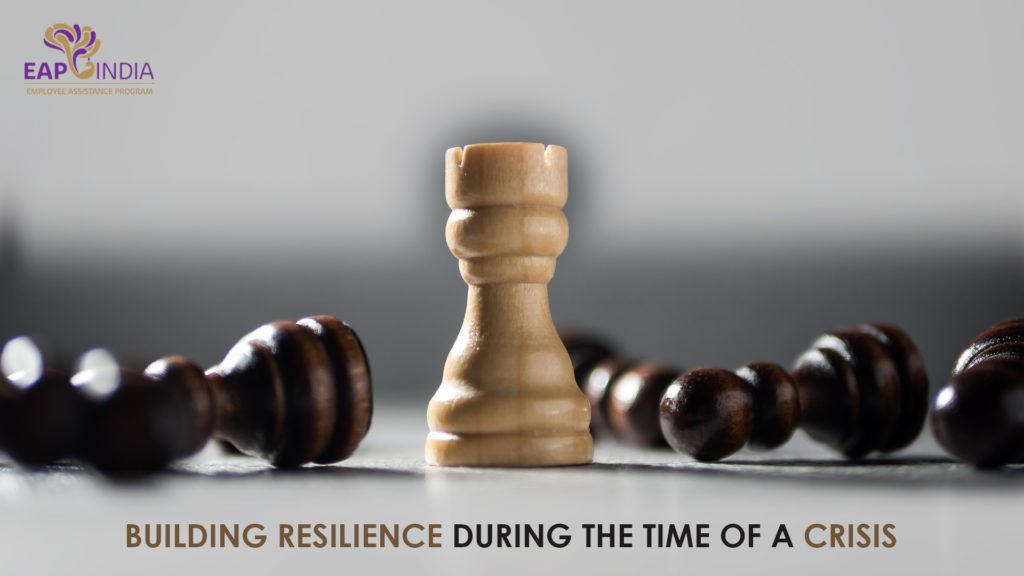Resilience is the process of adapting well in the face of adversity, trauma, tragedy, threats or significant sources of stress- such as family and relationship problems, serious health problems or workplace and financial stressors. (Source: PennState Behrend)
Research tells us that resilience helps people become more productive, engaged and satisfied at work.
Resilience can help you cope with challenges, reach your potential and thrive. Building resilience is a mindset, a way of living, thinking that we constantly need to use to achieve and thrive more.
Here are some common work-related factors that can be stressful during a crisis
- Concern about the risk of being exposed to the virus at work
- Taking care of personal and family needs while working
- Uncertainty about the future of your workplace and/or employment
- Adapting to a different workspace and/or work schedule
Key Steps To Building Resilience
Like building a muscle, increasing your resilience requires time and dedication. If you don’t put in the work, it might atrophy. People are conditioned to think of resilience as a personality trait (either you have it or you don’t), but this isn’t the case. With intention and practice, you can become more resilient, no matter your age.
- Learn Coping Skills
Deep breathing helps calm the central nervous system and works whether you’re experiencing symptoms of panic or general discomfort. Try square breathing. While tracing a square in your palm, focus on your breathing and count as you draw each line: Inhale, two, three, four; hold, two, three, four; exhale, two, three, four; hold, two, three, and four.
Meditation and visualization: Several apps can assist with getting into the habit of clearing your mind of stress and visualizing positive outcomes, such as Calm for adults and teens, and Stop, Breathe, Think Kids for little ones.
- Adjust Your Thought Process
It’s difficult to maintain a realist optimistic outlook when the future feels so uncertain and bleak, but positive thinking will help you focus on getting your daily tasks and give you hope. Whenever you feel flooded with negative thoughts, own them. Accept them and talk through them.
They tend to lose their hold over your mind when you start stating your negative thoughts and thinking where they stem from. In the end, offer yourself to think three positive statements in return of those negative thoughts to help rewire your brain. Everyone from older adults to very young children can learn to do this.
- Focus On Physical Wellness
Prioritize Sleep: According to the National Sleep Foundation, different ages require different hours of sleep and sleep levels are universally affected when you’re under stress. Older adults tend to log fewer hours at night (7 to 8 hours), but may need a nap during the day. Adults need 7 to 9 hours; teens need 8 to 10, and children need 9 to 11. Be sure to maintain a consistent sleep schedule during this time.
Exercise: Daily exercise is a natural stress reliever. Get out for walks or try a live stream exercise class. Since the lockdown, many apps have given access to people to practice live meditation, exercises, and yoga.
Prioritize Healthy Eating: Since we are at home now, we have the opportunity to watch over our diet. Eating at home generally increases the likelihood of consuming a healthy diet. Research has shown that there is a strong relationship between fluctuations in brain blood flow and brain health. Foods that contain Vitamin E like almonds, spinach are considered to be major stress-relievers.
- Accept that there are things that aren’t under your control: there are always going to be certain things that won’t be within your control. Focusing on those unimportant, unchangeable things will eventually leave you frustrated and exhausted. Try letting go of things, and feel lighter, focus more on your positive energy. Although you know you cannot change reality, you can always alter the way you respond to them.
- Embrace Change: accept that there will always be change. Instead of focusing on things that you know are not in your control, which will create disruptions in your life, take a flexible approach and believe that ‘new change’ may also bring out different opportunities and many positive outcomes.
- Focus On Areas Where You Can Start Building Your Resilience:
There are six main areas that you can focus on while building resilience:
- Confidence: Your strengths, knowing what you’re good at, feeling in control.
- Adaptability: Thinking about things in different ways, different perspectives to see which way suit you best in achieving your results.
- Perspective: Take in different perspectives, different opinions and consider which one helps you reach closer to your goals
- Positivity: Focus on realistic optimism, so being optimistic about how you can push yourself to achieve a particular goal
- Mastery: Learning leads to mastery of particular skills. Mastery in useful skills makes you achieve a growth mindset
- Stamina: Having a good support system helps in building good stamina and having a resilience-building strategy.
Taking small steps in achieving which focus area you can start building your resilience in.
Conclusion
Another way to become more resilient is to reflect on your experiences. Recall a time in your personal or professional life when you were able to rise above a difficult situation and ask yourself how you coped with it during that time.
“You have the resources within you to become more resilient,” Sinclair says. “But it does take some effort to learn or remind yourself what will work best for you and it requires you making time for yourself.”




